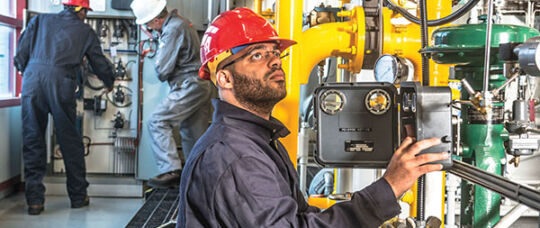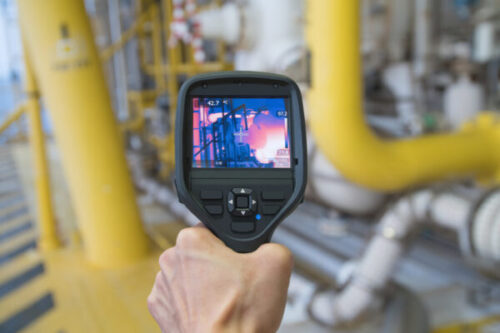The 3-Minute Rule for Roar Solutions
The 3-Minute Rule for Roar Solutions
Blog Article
Everything about Roar Solutions
Table of ContentsSome Ideas on Roar Solutions You Need To KnowRoar Solutions Things To Know Before You BuyRoar Solutions Can Be Fun For Anyone
In such an atmosphere a fire or explosion is feasible when three basic conditions are fulfilled. This is usually described as the "unsafe area" or "combustion" triangle. In order to safeguard installments from a potential surge a technique of analysing and categorizing a possibly unsafe location is called for. The objective of this is to make sure the correct selection and setup of devices to eventually prevent an explosion and to ensure safety and security of life.
(https://myspace.com/roarsolutions)
No devices should be mounted where the surface temperature of the equipment is more than the ignition temperature level of the provided risk. Below are some usual dirt dangerous and their minimum ignition temperature level. Coal Dust 380C 225C Polythene 420C (melts) Methyl Cellulose 420C 320C Starch 460C 435C Flour 490C 340C Sugar 490C 460C Grain Dust 510C 300C Phenolic Material 530C > 450C Aluminium 590C > 450C PVC 700C > 450C Residue 810C 570C The chance of the threat existing in a concentration high adequate to create an ignition will vary from location to area.
In order to classify this threat an installation is separated into locations of threat relying on the quantity of time the dangerous exists. These areas are referred to as Zones. For gases and vapours and dirts and fibers there are 3 zones. Zone 0 Area 20 A dangerous ambience is extremely most likely to be existing and may exist for extended periods of time (> 1000 hours per year) or also continuously Area 1 Zone 21 A dangerous environment is feasible but unlikely to be existing for extended periods of time (> 10 450 C [842 F] A classification of T6 suggests the minimum ignition temperature level is > 85 C [185 F] Harmful area electric equipment perhaps developed for usage in greater ambient temperature levels. This would certainly suggested on the score plate e.g. EExe II C T3 Ta + 60C( This indicates at 60C ambient T3 will not be exceeded) T1 T1, T2, T3, T4, T5, T6 T2 T2, T3, T4, T5, T6 T3 T3, T4, T5, T6 T4 T4, T5, T6 T5 T5, T6 T6 T6 A T Class rating of T1 indicates the maximum surface area temperature generated by the tool at 40 C is 450 C. Thinking the linked T Class and Temperature level rating for the equipment are suitable for the location, you can constantly utilize an instrument with an extra strict Department score than required for the area. There isn't a clear solution to this question sadly. It actually does depend on the kind of equipment and what repair work need to be brought out. Equipment with certain examination treatments that can not be executed in the field in order to achieve/maintain 3rd party ranking. Have to return to the manufacturing facility if it is before the tools's service. Field Fixing By Authorised Employee: Difficult screening might not be called for however specific treatments might require to be followed in order for the equipment to maintain its 3rd celebration score. Authorised workers should be used to carry out the work correctly Repair should be a like for like replacement. New part have to be thought about as a straight substitute needing no unique screening of the devices after the repair is total. Each tool with a dangerous score must be evaluated individually. These are detailed at a high degree listed below, however, for more comprehensive info, please refer straight to the guidelines.
Not known Incorrect Statements About Roar Solutions
The tools register is a detailed database of devices documents that includes a minimum collection of fields to identify each item's place, technical specifications, Ex lover classification, age, and environmental information. This information is vital for monitoring and taking care of the devices efficiently within unsafe areas. On the other hand, for regular or RBI tasting evaluations, the grade will be a mix of Detailed and Close evaluations. The ratio of Comprehensive to Shut evaluations will certainly be figured out by the Tools Risk, which is analyzed based upon ignition threat (the probability of a source of ignition versus the possibility of a combustible environment )and the unsafe location category
( Zone 0, 1, or 2). This variation will likewise influence the resourcing needs for job preparation. As soon as Whole lots are defined, you can develop tasting strategies based upon the example dimension of each Whole lot, which describes the number of arbitrary tools products to be checked. To determine the required sample size, two elements need to be reviewed: the dimension of the Great deal and the classification of assessment, which shows the degree of effort that should be used( minimized, typical, or increased )to the inspection of the Whole lot. By incorporating the group of examination with the Great deal size, you can then develop the suitable rejection standards for a sample, implying the allowable number of defective products found within that example. For more information on this process, please refer to the Energy Institute Guidelines. The IEC 60079 typical advises that the maximum interval in between examinations must not surpass three years. EEHA assessments will also be carried out beyond RBI projects as component of scheduled upkeep and devices overhauls or repairs. These examinations can be attributed toward the RBI example dimensions within the impacted Whole lots. EEHA assessments are performed to determine mistakes in electric tools. A heavy racking up system is vital, as a solitary piece of tools may have multiple faults, each with varying degrees of ignition threat. If the combined rating of both assessments is less useful site than two times the fault rating, the Lot is considered appropriate. If the Lot is still taken into consideration inappropriate, it must undergo a complete evaluation or validation, which might trigger more stringent evaluation methods. Accepted Great deal: The root causes of any kind of mistakes are identified. If a typical failing mode is found, extra equipment may call for evaluation and repair. Faults are classified by intensity( Safety and security, Honesty, Housekeeping ), making sure that immediate concerns are evaluated and attended to without delay to mitigate any kind of impact on safety and security or procedures. The EEHA database must track and record the lifecycle of mistakes in addition to the corrective actions taken. Carrying out a durable Risk-Based Examination( RBI )technique is critical for making certain conformity and safety and security in taking care of Electrical Equipment in Hazardous Areas( EEHA) (eeha). Automated Fault Rating and Lifecycle Monitoring: Easily handle faults and track their lifecycle to enhance evaluation precision. The intro of this assistance for risk-based examination better strengthens Inspectivity's placement as a best-in-class remedy for regulative compliance, as well as for any type of asset-centric assessment usage instance. If you want learning extra, we welcome you to request a demonstration and discover how our remedy can transform your EEHA management procedures.
More About Roar Solutions

In regards to eruptive threat, a dangerous area is an environment in which an eruptive ambience exists (or may be expected to be existing) in amounts that require special preventative measures for the building, installment and use of tools. eeha. In this short article we discover the difficulties faced in the workplace, the threat control procedures, and the called for expertises to work securely
These materials can, in particular conditions, form explosive environments and these can have significant and tragic consequences. Most of us are familiar with the fire triangle eliminate any kind of one of the three aspects and the fire can not take place, but what does this mean in the context of dangerous areas?
In many circumstances, we can do little regarding the degrees of oxygen in the air, yet we can have considerable influence on sources of ignition, for instance electric tools. Unsafe areas are documented on the harmful area category illustration and are recognized on-site by the triangular "EX-SPOUSE" indication. Right here, amongst other crucial info, zones are divided into three types depending upon the danger, the probability and period that an explosive environment will exist; Area 0 or 20 is regarded one of the most harmful and Area 2 or 22 is regarded the least.
Report this page